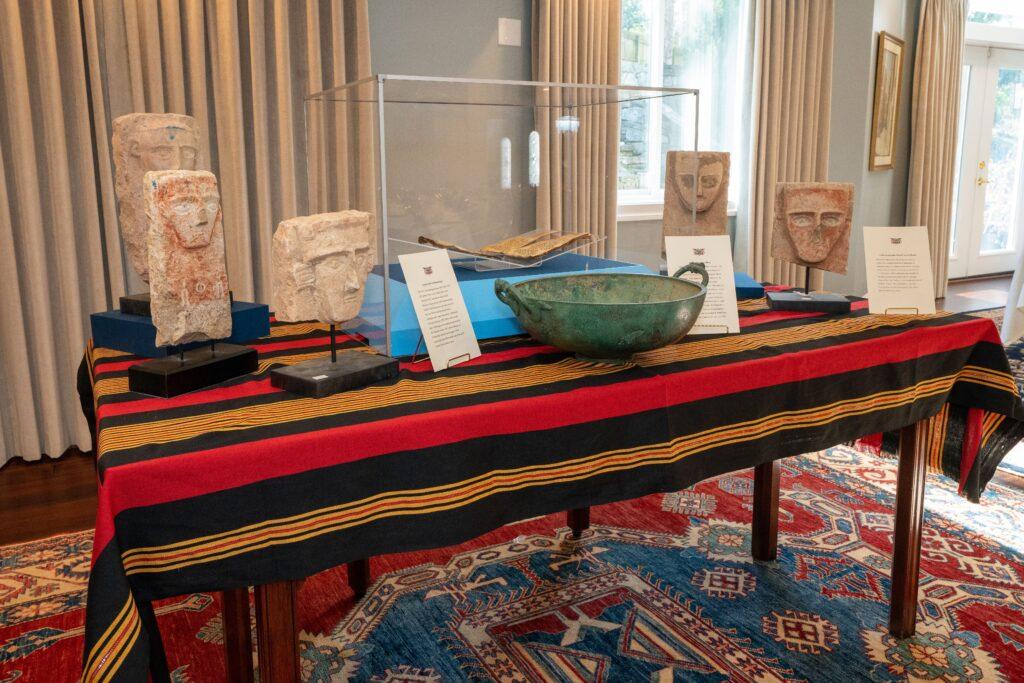The Smithsonian National Museum of Asian Art (NMAA) announced Feb. 21 a historic partnership with the government of the Republic of Yemen to store important heritage artifacts.
NMAA manages over 45,000 artifacts and is one of the largest collections of Asian art in North America. The museum will store 77 cultural objects from Yemen for two years, after which the Yemeni government may request a repatriation, a return of these items to the country.
Ella Weiner, a research assistant for global affairs in the Office of the Director at the NMAA, said the museum is honored to protect the artifacts.
“It is an immense honor to be entrusted with the temporary care and safekeeping of this historic collection of Yemeni heritage,” Weiner wrote to The Hoya. “The preservation of cultural heritage is a core focus area at the Smithsonian’s National Museum of Asian Art (NMAA).”
The objects include a bronze bowl, folios from early Qur’ans and funerary tombstones. While most objects will remain in storage, some will join the exhibition “Ancient Yemen: Incense, Art, and Trade.” The museum curators aim to engage with the Yemeni community to better interpret the Yemeni objects displayed.
The Saudi Arabia-backed government and the Houthis, an armed rebel group, have attacked Yemen for the past eight years.
The conflict has taken over 200,000 lives — and cultural artifacts and infrastructure are facing looting and destruction.
The 77 Yemeni objects were taken out of the country illegally, according to Weiner. The United States obtained 64 of the forfeited objects as a result of investigative efforts by the U.S. Department of Homeland Security and the U.S. Attorney’s Office for the Eastern District of New York. The U.S. Department of Homeland Security’s Customs and Border Protection intercepted the other 13 objects amidst illegal transport to the United States.
Mohammed Al-Hadhrami, Yemen’s ambassador to the United States, said he believes that these artifacts will not be safe in Yemen.
“With the current situation in Yemen, it is not the right time to bring the objects back into the country,” Al-Hadhrami said in a statement to Smithsonian Magazine. “The Smithsonian’s National Museum of Asian Art is a global leader in the field of cultural heritage and preservation. We are pleased to see these objects in their care.”
Weiner said the looting of artifacts robs communities of their history and culture.
“The illegal looting and trafficking of cultural heritage is a huge global problem, and the U.S. is one of the largest market countries where these objects are sold,” Weiner said. “So much of an object’s history and context are lost, and communities are deprived of their heritage.”
Yen-Han Chen (CAS ’25), who was born in Taiwan and is a member of the Asian American Student Association, said that repatriation and the Smithsonian’s handling of the Yemeni objects is a multidimensional issue with no ideal response.
“The purpose of repatriation is to ensure that the places that have been impacted by colonialism by extractive institutions can regain what they had and make sure their cultural heritage is within their territory,” Chen told The Hoya. “That is, of course, the ideal situation, but if you have Yemen, a state that is, by a lot of means, a very dysfunctional and weak state that cannot guarantee the safety of these artifacts, I think the arrangement we have right now is the best one we can have so far.”

Chase Robinson, the Dame Jillian Sackler director of the Arthur M. Sackler Gallery and Freer Gallery of Art at the Smithsonian, said he hopes to make the partnership with the Yemeni government collaborative.
“Our partnership with the Republic of Yemen Government and its embassy is a powerful example of how shared stewardship of objects can build bridges and serve as a catalyst for learning and understanding, and we look forward to working with the Yemeni community to tell their stories,” Robinson said in a Smithsonian press release.
Chen said repatriation should be a collaborative process and acknowledges the importance of returning cultural items to formerly colonized nations.
“If you want to look at [repatriation] from a perspective that is productive and justice-oriented, then it should be a partnership,” Chen said. “It may not be the most popular solution, but I think it is the most productive one, and it is the one that will bring the most good to a more just world — a world where nations that were formerly colonized, post-colonial nations, can regain their artistic possessions.”




















